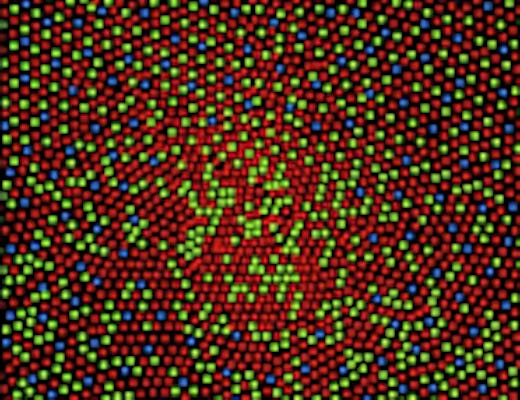How an Integrating Sphere Functions
Integrating spheres are hollow spherical cavities with a highly reflective and white coating that are used to measure for example the power of laser light and total luminous flux from lamps. Integrating spheres are like cosine correctors or lenses only optics and need a detector, like a spectroradiometer, connected and calibrated to it, in order to work.

To take a measurement, a light source
(the sample) is either placed in front of the sphere opening (2π) to
perform an irradiance measurement or placed inside the integrating
sphere (4π) to capture the entire radiant flux. In each of these
measurement setups, light rays will bounce multiple times on the
reflective coating to generate a homogeneous light distribution
throughout the entire integrating sphere.
Baffles
Such baffles are extremely important as the light going into an integrating sphere shouldn’t directly strike either the detector or the spot on the sphere interior from which the detector is gathering direct reflectance. To be able to achieve this, baffles tend to be used in most integrating sphere designs. Baffles can cause particular inaccuracies because they prevent the integrating sphere from being a perfectly shaped spherical cavity. Therefore, it makes sense to minimize the number of baffles and ports used in an integrating sphere.
Reflective Coatings
When selecting a reflective finish for an integrating sphere, two factors should be considered: reflectance and durability. All components, including the baffles, should be coated with highly reflective and diffuse material to ensure all wavelengths of the light entering the sphere are reflected. If there will be an abundance of light and the sphere will be utilized in surroundings that may result in the sphere collecting dirt or dust, a more resilient, washable coating should be selected. Dirt and dust have to be avoided as it will absorb light and will likely also have an effect on the reflectance of specific wavelengths.
Uses
One of the applications where an
integrating sphere is used is the measurement of total luminous flux
from lamps and light bulbs. Integrating sphere diameters for these uses
can be as small as a couple of centimeters or as large as a couple of
meters. The right size for an integrating sphere is typically determined
by the size of the light source. Larger spheres offer a
better uniformity because of its larger surface. In conjunction with a
spectrometer, an integrating sphere can yield essential spectral
parameters like the spectral power distribution (SPD), derived numbers like the color rendering index or the newer TM-30 index as well as colorimetric values like chromaticity, dominant wavelength and more.
An integrating sphere can readily capture and incorporate laser beams or highly divergent sources like laser diodes. It can be made for a wide range of incident angles over a large location without impacting the signal at the detector.
An integrating sphere is also an ideal way of measuring irradiance acting as a cosine corrector. The output aperture of an integrating sphere source, when made correctly, can generate a near-perfect diffuse and Lambertian light source. In such situations, the light source is positioned outside the integrating sphere which is typically know as a 2-pi measurement.
Other applications that involve integrating spheres are reflection and transmission measurements of materials. These measurements offer accurate and detailed spectral information about materials such as glass used in horticulture / greenhouses.

